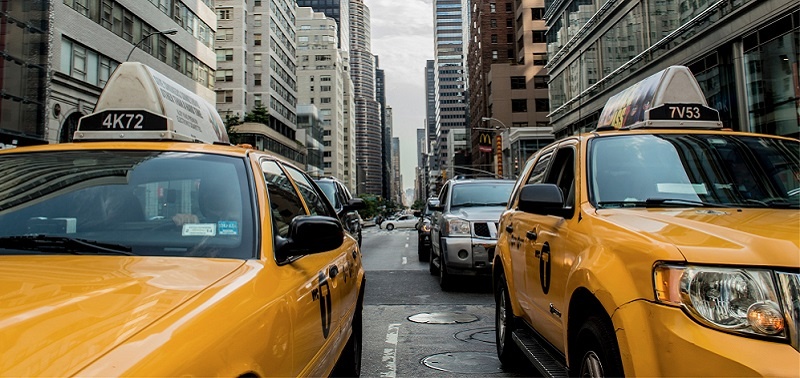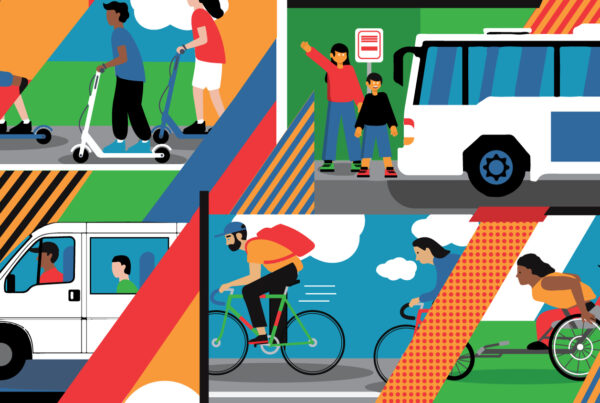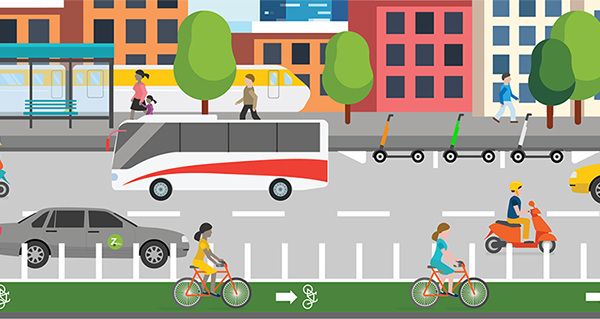At the TranspoCamp conference in Washington, D.C. this January, transportation expert Gabe Klein was asked to offer a prediction for the industry in the coming year.
“The disrupters will be disrupted,” he said, suggesting that taxis would make a comeback in 2015 despite the onslaught of competition from Uber, Lyft and other ride-sourcing companies. It had become a “do or die” situation for the cab industry, he said.
While there hasn’t been much disruption yet, that may change soon as several leading U.S. cities work toward developing their own universal e-hailing apps, which will allow users to summon a city cab from their smartphones just like an Uber or Lyft ride.
Taxi-hailing apps like Flywheel, Hailo and Curb have already launched in major markets to varying success. However, the major difference is that a universal, city-owned app would be able to aggregate all the city’s available cabs together in one place, making it much easier for users to find and hail a ride (there are roughly 7,000 licensed cabs in Chicago, for instance, and nearly 20,000 in New York City).
By helping the taxi industry become more competitive, such apps may also play an important role in preserving choice for consumers. When it comes to shared mobility, research suggests that people with a robust set of transportation choices – whether it’s bikesharing, carsharing, cabs or buses – are more likely to leave their cars at home…or get rid of them altogether.
In December 2014, there was a flurry of news coverage as cities including Chicago, D.C. and New York City each announced they would create their own e-hailing mobile apps. While these cities are working toward a similar goal, however, their approaches – and progress – are varied. Here is a breakdown of their efforts to date.
Chicago
The Chicago City Council passed an ordinance in December 2014 to launch a taxi-hailing app as part of a “Taxi Driver Fairness” reform package. The plan, which was backed by the city’s local taxi union, will also help modernize the way the cabs are regulated in the city and give taxi drivers some relief on fines and fees.
To build the city’s universal e-hail app, Chicago has opted to solicit help from a third-party application developer. The city issued its RFP on May 4, 2015, with proposals due June 15. And while it’s not clear yet who’s on the short list, several companies have publicly expressed an interest. That includes DC-based taxi-hailing app Curb, which has been operating in Chicago since 2009 and says it currently works with more than 5,000 cabs in the city.
Chicago’s app is expected to include several common ride-sourcing features such as estimated wait times, fare quotes and a secure electronic payment option. The City has also indicated that every cab driver will be required to be “on app” while working to keep the pool of vehicles available to consumers as large as possible.
Washington, D.C.
The D.C. Taxicab Commission announced in December that it will require the city’s 7,000 licensed taxis to use a “Universal D.C. TaxiApp.” The city’s app will allow riders to pay by pre-loading their credit card information into the app, but they will also have the option to pay with cash or card in the vehicle. Cabs would also retain the exclusive right to accept street hails, as in other cities.
Unlike Chicago, D.C. has opted to keep the creation of its own e-hailing app in house, delegating its development to the city’s IT staff. As part of the regulation, the Commission also created an industry co-op to manage and market the app once it’s finalized. Experts have suggested the co-op can help further unify the taxi industry in DC and bolster an environment of healthy competition.
“DCTC [is] working very closely with the industry co-op to include monitoring use, performance and effectiveness so adjustments [to the app] can be made to enhance functionality,” said D.C. Taxicab Commission spokesperson Neville Waters. “In addition, DCTC will share responsibility with the co-op for marketing the app to support widespread customer awareness. The ultimate goal is to ensure the co-op achieves success with the app.”
According to Waters, the technical aspects of the Universal DC TaxiApp have been completed and limited field testing will begin in June, with expanded testing occurring throughout the summer. Barring any complications, the app is scheduled to be introduced to the market in the fall.
New York City
New York City Councilman and software developer Benjamin Kallos proposed legislation in December 2014 to require the city’s Taxi and Limousine Commission to create its own e-hailing app. Unlike DC and Chicago, New York City cab drivers would have the choice to opt in or out of the app. Since the city boasts nearly 20,000 yellow and green cabs, however, supply may not be much of an issue.
Most noteworthy is that the bill would also task the Commission with creating an API to allow third-party apps to access city cab data, such as location of available vehicles. Developers could then use the API to create their own products, spawning a variety of applications that connect riders with drivers using the same stream of public information.
While Kallos’ plan generated some initial support from both the public and private sectors, the momentum seems to have slowed. According to Councilman Kallos’ office, his legislative staff is currently working to get more co-sponsors for the bill and hopes to bring it to a vote this fall.
E-Hailing & Disruption
Experts have suggested universal e-hailing apps may have other implications that can drive improvements in the cab industry. For instance, Los Angeles Taxi Cab Commissioner Eric Spiegelman – whose city has established a working group in pursuit of its own e-hailing app – suggested that cities could track the amount of time taxis spend providing service in low-income areas, then reward them with increased access to lucrative trips, such as pick-ups and drop-offs at LAX.
While it’s clear city-developed apps have the potential to help level the playing the field for taxis, the transition may not be easy for the industry, which in some cases still seems opposed to the idea of being forced to compete openly with Transportation Networking Companies like Lyft and Uber. It’s also unclear if the universal apps will address some of the shortcomings of current taxi apps. For instance, one complaint has been that passengers can often still hail cabs from the street, even after they have been e-hailed, making some mobile apps unreliable.
Despite the many issues that still need to be resolved, however, it does seem as though universal e-hailing apps are primed to add a little more disruption to a disrupted marketplace – and all to the benefit of consumers.



